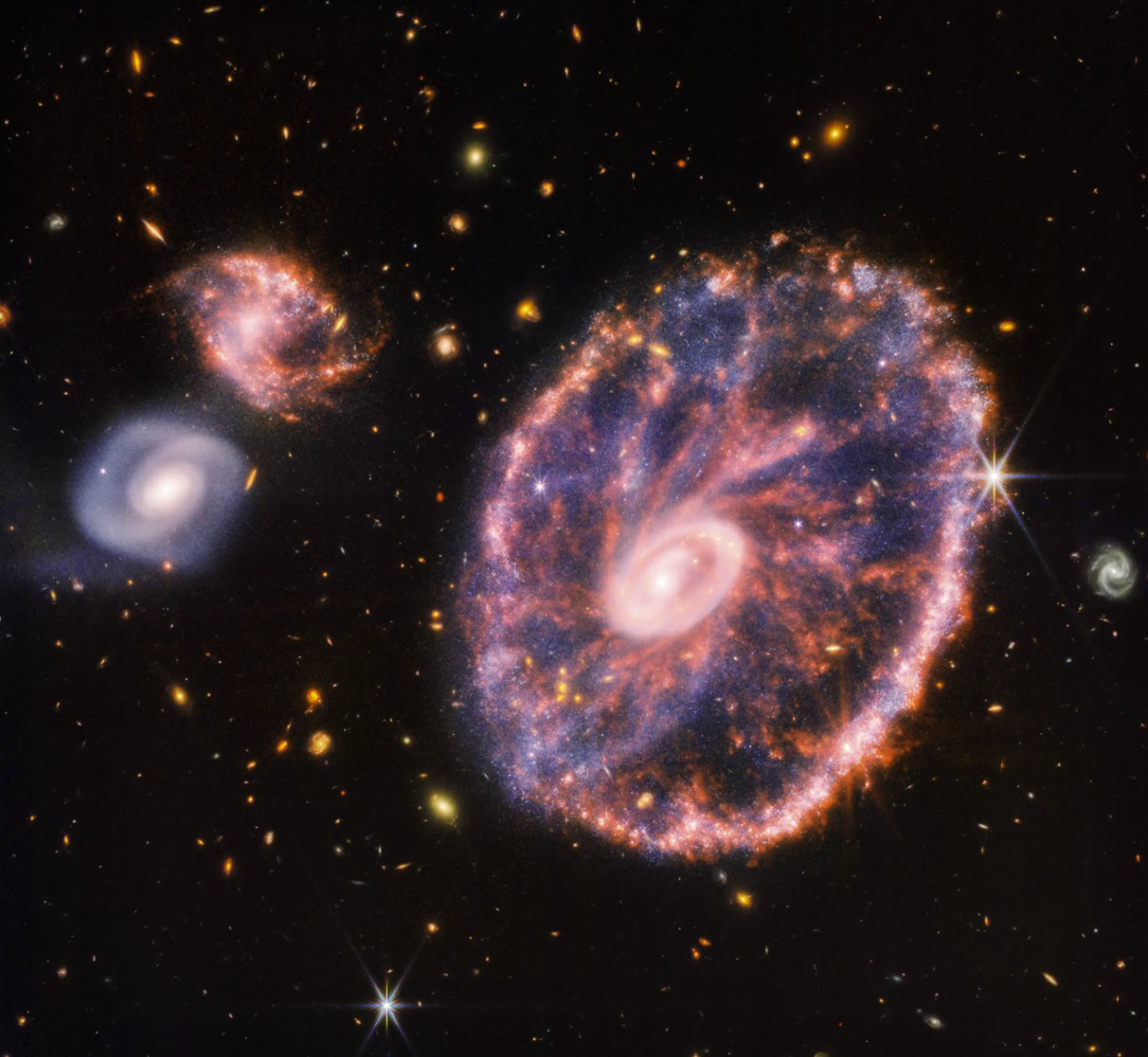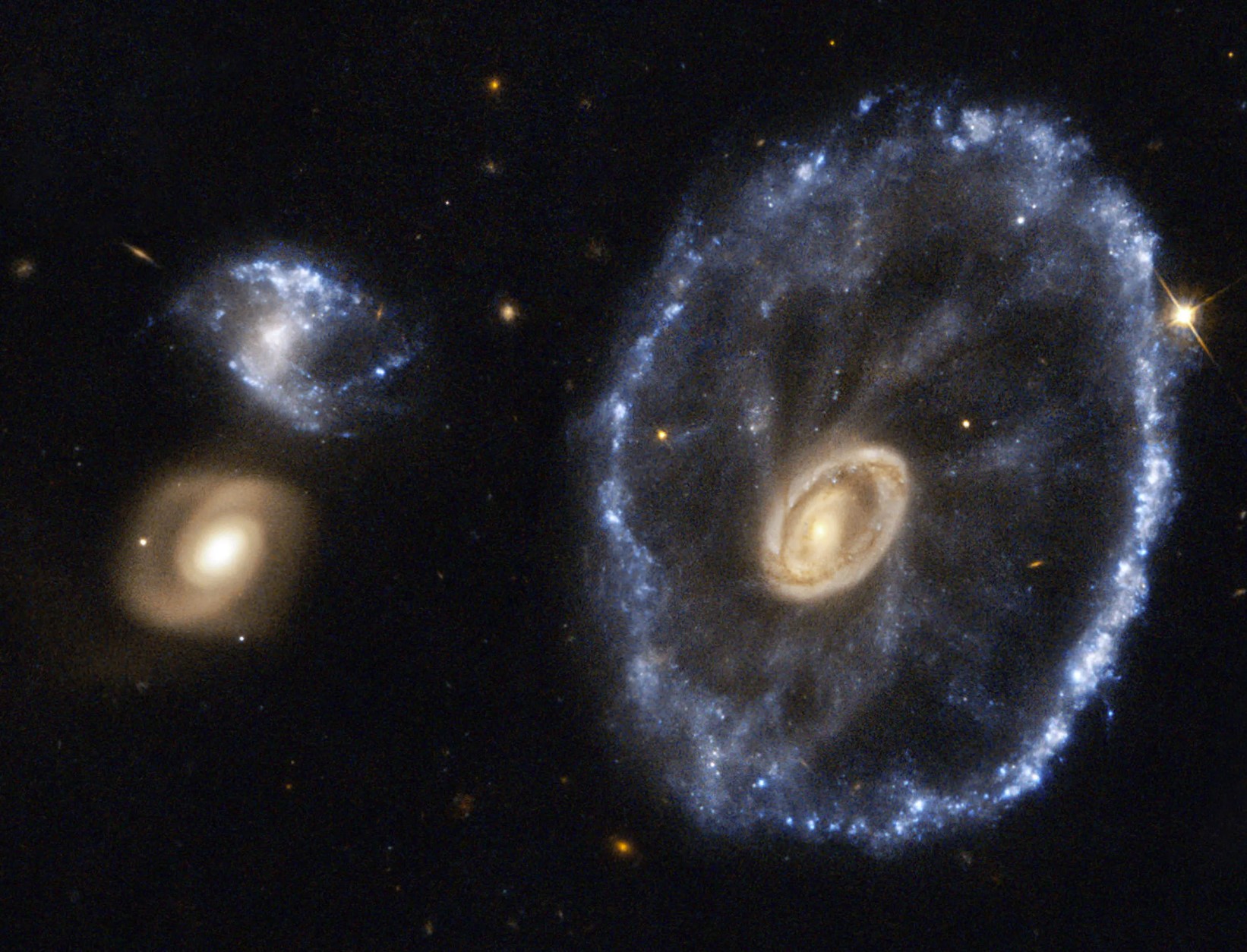Stunning new photos of the Cartwheel Galaxy from James Webb Space Telescope

The James Webb Space Telescope's photos were soon revealing the instrument's impressive power, showcasing some of the universe's most famous sights in fascinating new detail. Another fantastic example has arrived courtesy of the telescope's advanced infrared cameras, which have revealed previously hidden components of what is known as the Cartwheel Galaxy.
The Cartwheel Galaxy is located in the Sculptor constellation about 500 million light years away, and it resulted from a colossal spiral galaxy colliding with a tiny one (which has since passed out of view). The smaller galaxy created shockwaves that swept up gas and dust, creating a ripple effect similar to throwing a stone into the middle of a lake.

The outer ring is believed to have been expanding for around 440 million years, and it now measures 1.5 times the size of our own Milky Way. It collides with surrounding gas as it expands outward, triggering star birth and supernovas. Meanwhile, the brilliant core in the inner circle is filled with scorching dust, containing huge clusters of newborn stars.
The Cartwheel Galaxy, as its name implies, is a beautiful crimson swirl of stars. Webb's predecessor, the Hubble Space Telescope, had previously photographed the Cartwheel Galaxy. However , because of the amount of dust in the way, these observations had been hindered.

Webb's newest camera technology has revealed the chaotic Cartwheel Galaxy in a new light. The Near-Infrared Camera (NIRCam) on the telescope, which acquires crucial wavelengths of light that reveal young stars forming in the outer ring that were previously hidden, reveals important features. The data from the NIRCam also shows variations in the clumpy structure of these young stars and the smoother forms of older ones.
Webb's Mid-Infrared Instrument has also revealed significant new information on the fine dust distribution in the Cartwheel Galaxy. The data is highlighted in red in the composite image at the top of the page, and it reveals areas that are abundant in hydrocarbons and chemical compounds such as silicate dust. These form spiraling "spokes" that make up the galaxy's skeleton, which may be viewed in earlier Hubble observations but only at much lower brightness.
Source: newatlas.com